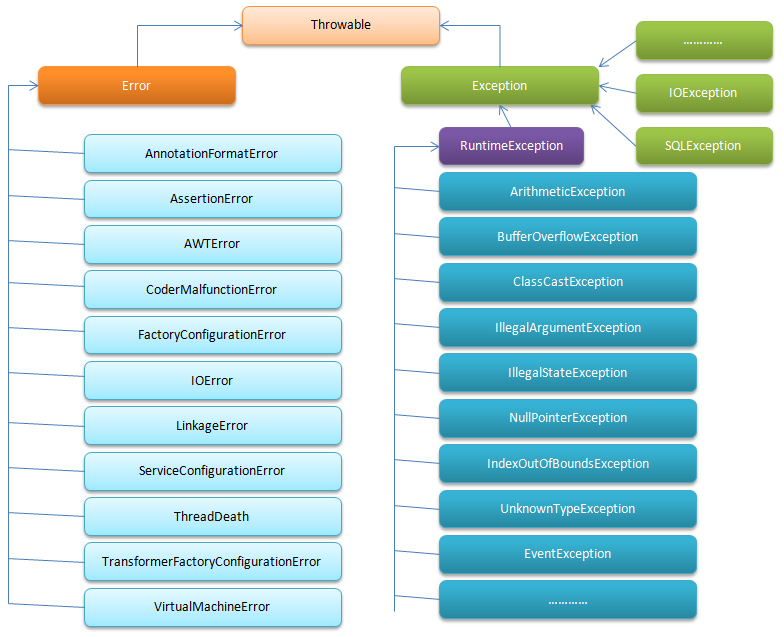
注意事项:
1。 Error仅在java的虚拟机中发生,用户无需在程序中捕捉或者抛出Error。
2。 Exception分为一般的Exception和RuntimeException两类。这里有点让人觉得别扭的是RuntimeException(Unchecked)继承于Exception(Checked)的父类。
PS: checked与unchecked的概念理解:
checked: 一般是指程序不能直接控制的外界情况,是指在编译的时候就需要检查的一类exception,用户程序中必须采用try catch机制处理或者通过throws交由调用者来处理。这类异常,主要指除了Error以及RuntimeException及其子类之外的异常。
unchecked:是指那些不需要在编译的时候就要处理的一类异常。在java体系里,所有的Error以及RuntimeException及其子类都是unchecked异常。再形象直白的理解为不需要try catch等机制处理的异常,可以认为是unchecked的异常。
checked与unchecked在throwable的继承关系中体现为下图:
+-----------+
| Throwable |
+-----------+
/ \
/ \
+-------+ +-----------+
| Error | | Exception |
+-------+ +-----------+
/ | \ / | \ \
\________/ \______/ \
+------------------+
unchecked checked | RuntimeException |
+------------------+
/ | | \
\_________________/
unchecked
首先定义一个基本的异常类GenericException,继承于Exception。
package check_unchecked_exceptions;
public class GenericException extends Exception{
/**
*
*/
private static final long serialVersionUID = 2778045265121433720L;
public GenericException(){
}
public GenericException(String msg){
super(msg);
}
}
下面定义一个测试类VerifyException
package check_unchecked_exceptions;
public class VerifyException {
public void first() throws GenericException {
throw new GenericException("checked exception");
}
public void second(String msg){
if(msg == null){
throw new NullPointerException("unchecked exception");
}
}
public void third() throws GenericException{
first();
}
public static void main(String[] args) {
VerifyException ve = new VerifyException();
try {
ve.first();
} catch (GenericException e) {
e.printStackTrace();
}
ve.second(null);
}
}
上面的例子,结合checked以及unchecked的概念,可以看出Exception这个父类是checked类型,但是其子类RuntimeException (子类NullPointerException)却是unchecked的。
https://www.cnblogs.com/shihuc/p/5201905.html